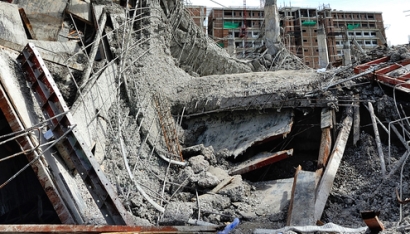Division and Zone classification systems
The National Electric Code (NEC), NFPA 70,[4] as published by the National Fire Protection Association, defines area classification and installation principles. The principles of the NEC Division and Zone classification systems are applied in countries around the globe, such as in the United States.
Specifically, Article 500 describes the NEC Division classification system, while Articles 505 and 506 describe the NEC Zone classification system. The NEC Zone classification system was created to provide multinational companies with a system that could be harmonized with IEC classification system and therefore reduce the complexity of management.
Canada has a similar system with the Canadian Electrical Code defining area classification and installation principles. Two possible classifications are described in Canadian Standards Association (CSA) C22.1 Canadian Electrical Code (CEC) Section 18 (Zones) and Appendix J (Divisions).
Explosive gas area classifications
Typical gas hazards are from hydrocarbon compounds, but hydrogen and ammonia are common industrial gases that are flammable.
- Class I, Division 1 classified locations
- An area where ignitable concentrations of flammable gases, vapors or liquids can exist all of the time or some of the time under normal operating conditions. A Class I, Division 1 area encompasses the combination of Zone 0 and Zone 1 areas.
- Zone 0 classified locations
- An area where ignitable concentrations of flammable gases, vapors or liquids are present continuously or for long periods of time under normal operating conditions. An example of this would be the vapor space above the liquid in the top of a tank or drum. The ANSI/NEC classification method consider this environment a Class I, Division 1 area. As a guide for Zone 0, this can be defined as over 1000 hours/year or >10% of the time.
- Zone 1 classified location
- An area where ignitable concentrations of flammable gases, vapors or liquids are likely to exist under normal operating conditions. As a guide for Zone 1, this can be defined as 10–1000 hours/year or 0.1–10% of the time.
- Class I, Division 2 or Zone 2 classified locations
- An area where ignitable concentrations of flammable gases, vapors or liquids are not likely to exist under normal operating conditions. In this area the gas, vapor or liquids would only be present under abnormal conditions (most often leaks under abnormal conditions). As a general guide for Zone 2, unwanted substances should only be present under 10 hours/year or 0–0.1% of the time.
- Unclassified locations
- Also known as non-hazardous or ordinary locations, these locations are determined to be neither Class I, Division 1 or Division 2; Zone 0, Zone 1 or Zone 2; or any combination thereof. Such areas include a residence or office where the only risk of a release of explosive or flammable gas would be such things as the propellant in an aerosol spray. The only explosive or flammable liquid would be paint and brush cleaner. These are designated as very low risk of causing an explosion and are more of a fire risk (although gas explosions in residential buildings do occur). Unclassified locations on chemical and other plant are present where it is absolutely certain that the hazardous gas is diluted to a concentration below 25% of its lower flammability limit (or lower explosive limit (LEL)).
Explosive dust area classifications

Flammable dusts when suspended in air can explode. An old system of area classification to a British standard used a system of letters to designate the zones. This has been replaced by a European numerical system, as set out in directive 1999/92/EU implemented in the UK as the Dangerous Substances and Explosives Atmospheres Regulations 2002
The boundaries and extent of these hazardous locations should be decided by a competent person. There must be a site plan drawn up of the factory with the divisions or zones marked on.
NEC:
- Class II, Division 1 classified locations
- An area where ignitable concentrations of combustible dust can exist all of the time or some of the time under normal operating conditions.
- Class II, Division 2 classified locations
- An area where ignitable concentrations of combustible dust are not likely to exist under normal operating conditions.
- Class III, Division 1 classified locations
- An area where easily ignitable fibers or materials producing combustible flyings are handled, manufactured or used.
- Class III, Division 2 classified locations
- An area where easily ignitable fibers are stored or handled.
Outside America:
- Zone 20 classified locations
- An area where ignitable concentrations of combustible dust or ignitable fibers/flyings are present continuously or for long periods of time under normal operating conditions.
- Zone 21 classified location
- An area where ignitable concentrations of combustible dust or ignitable fibers/flyings are likely to exist under normal operating conditions.
- Zone 22 classified locations
- An area where ignitable concentrations of combustible dust or ignitable fibers/flyings are not likely to exist under normal operating conditions.
- Unclassified locations
- Also known as non-hazardous or ordinary locations, these locations are determined to be neither Class II, Division 1 or Division 2; Class III, Division 1 or Division 2; Zone 20, Zone 21 or Zone 22; or any combination thereof.

